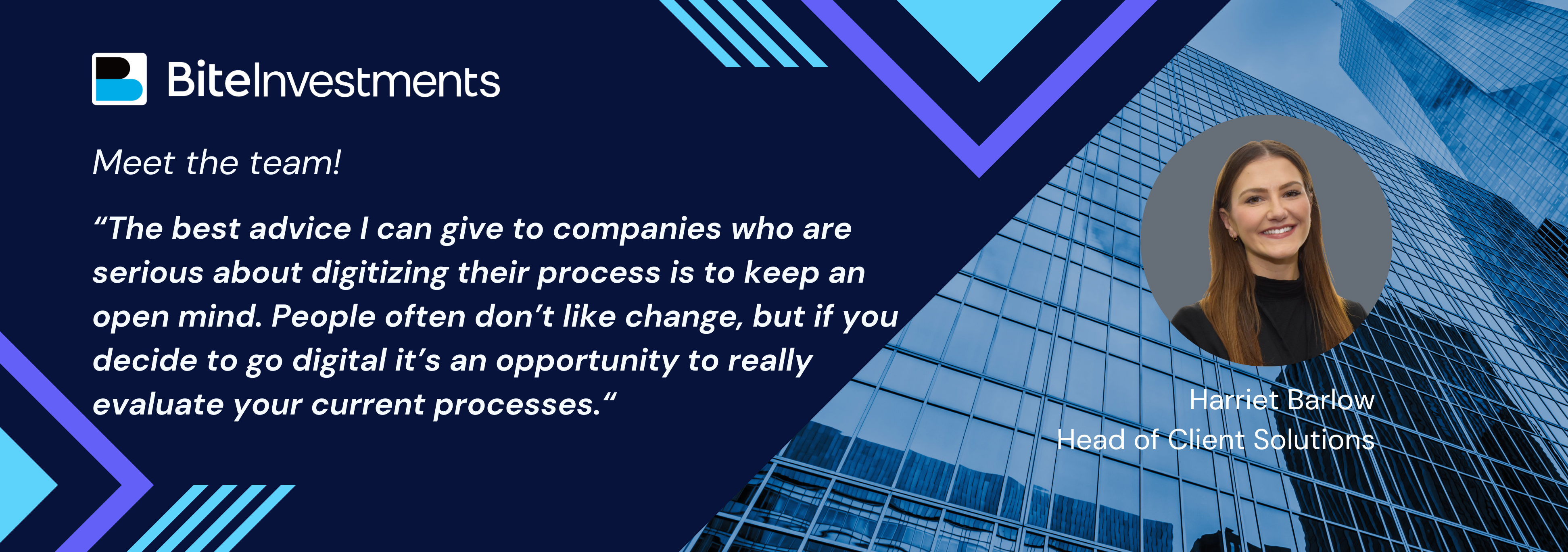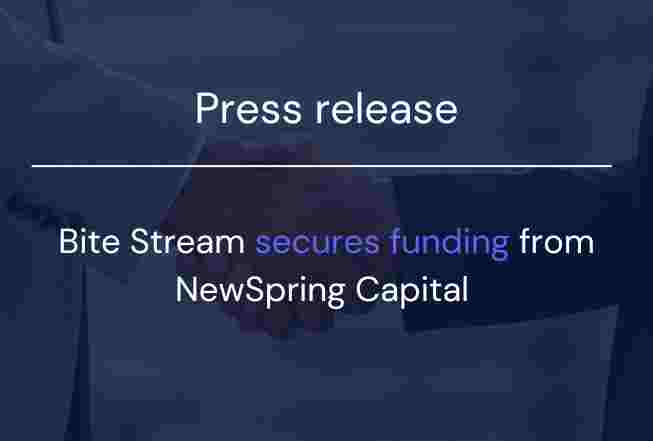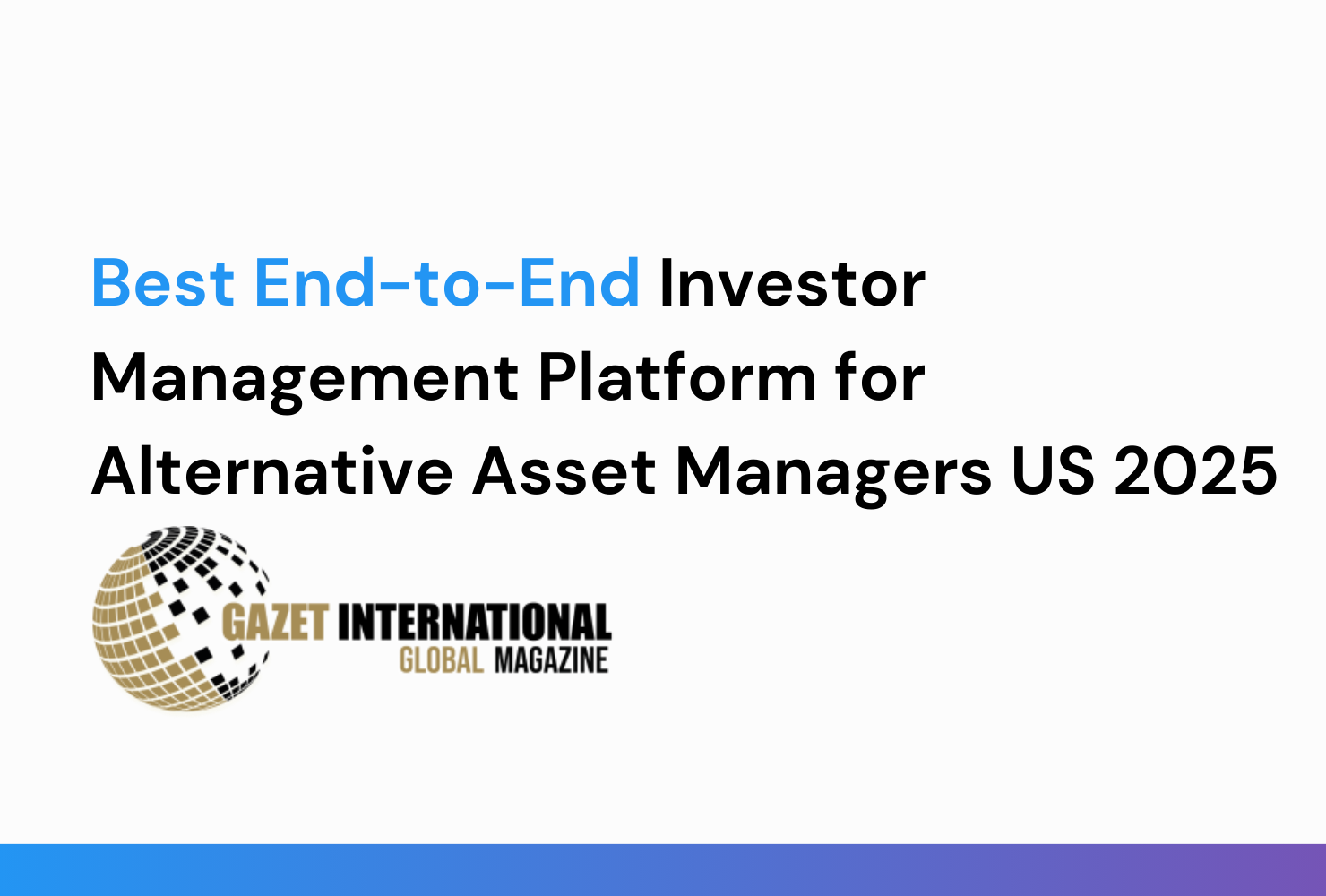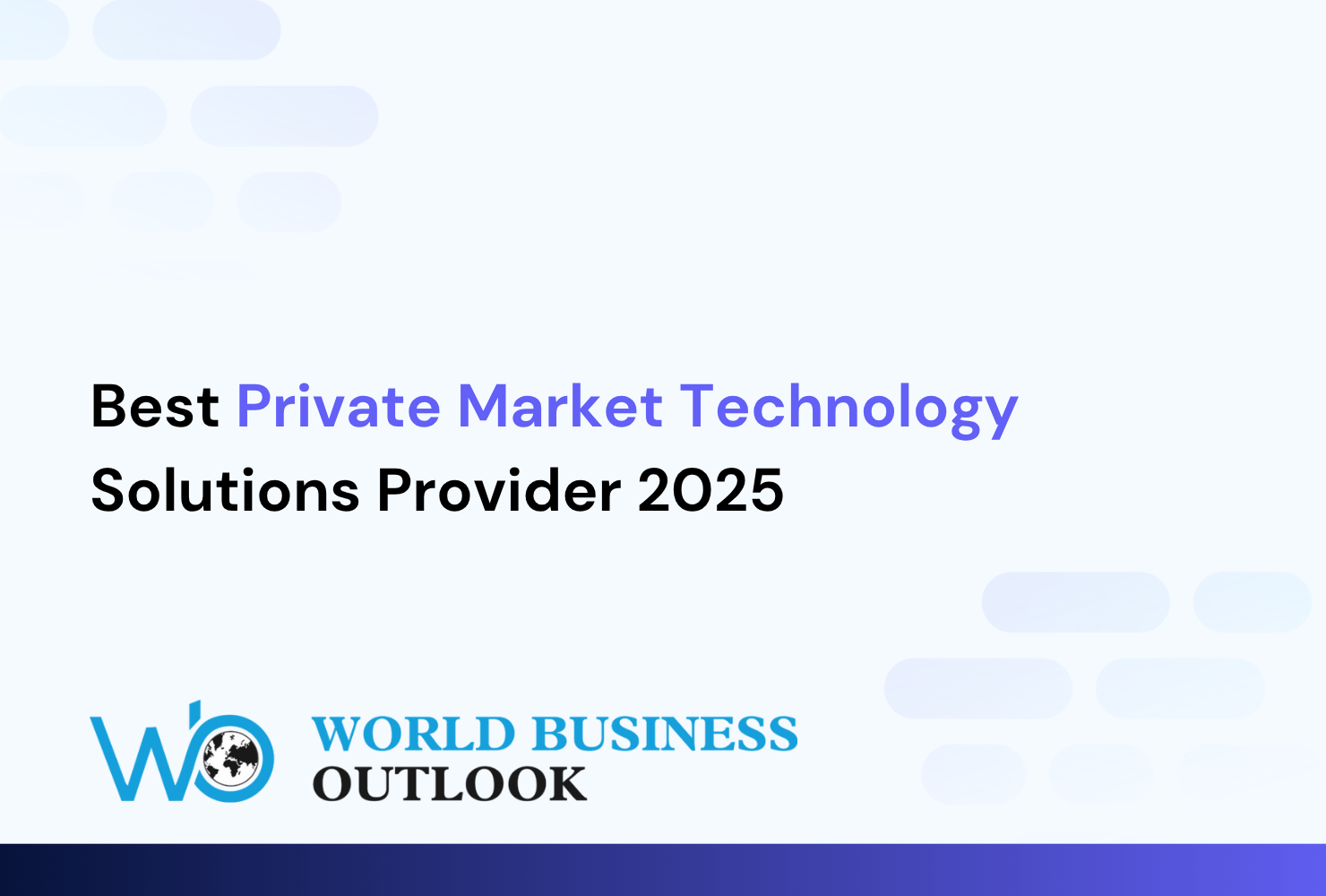
We are pleased to welcome Harriet Barlow to the Bite Stream team as Head of Client Solutions, to lead the client service function, responsible for managing all client-related matters.
Harriet brings valuable experience in client service and relationship management from her tenure at Schroders Investment Management, where she spent four years managing the Derivative Onboarding team. Prior to this, she worked for JDX Consulting where she was placed on various projects involving legal, product support and fintech. Her longest placement was at OpenText, working on the development of their SaaS contract analysis tool.
As we extend a warm welcome to Harriet, we invite you to get to know her better through this series of quick-fire questions.
1. Tell us a bit about your background: what have you done in your past roles?
I worked at a consultancy firm for 4 years, which provided me with the opportunity to experience working at several different companies and in varied roles.
My longest placement during that period was at OpenText, I worked on a contract analysis tool that digitized financial contracts. This was perfect because leaving university, I knew I didn’t want to be a solicitor, but I still wanted to use my law degree and Legal Practice Course (LPC). It was there that I expanded my legal knowledge whilst gaining experience in software development, relationship management, and cross-cultural management leading a team in London, Singapore, and India.
I eventually took a permanent role at one of my projects, leading asset manager Schroders, working as a Derivative Onboarding Manager. I was responsible for managing a team who enabled all derivative trading for Schroders. Before I left, my team’s focus was to integrate a new onboarding platform into our workflow. This tool digitized every aspect of our manual onboarding steps and streamlined the process.
2. What are you hoping to contribute with at Bite?
I was lucky to gain rare experience during my time at the consultancy firm. I began on a project at OpenText and then in an interesting turn of events, I was placed on a project at one of OpenText’s major clients. This gave me a different perspective, firstly as the service provider and then as the customer. I could articulate the client’s needs whilst empathising with the constraints faced by the service provider. I’m hoping I can use this experience to build an understanding of Bite’s clients’ requirements and how our solution can accommodate these. Additionally, my experience at a longstanding asset management company like Schroders has taught me the importance of clearly defined processes. I hope to utilize this to continue to improve Bite’s onboarding process for my team and our clients, especially as we continue to grow.
3. How does one build strong client relationships in a digital age?
In the growing world of AI, we’re at serious risk of losing the human element to online interactions. To build strong client relationships, it’s becoming even more important that we retain the personal element to online communications. Directly linked to this is the need to provide content that adds value and is tailored to its audience. To do this, you really need to take the time to understand the client’s needs and business. This is especially true for Bite since our configurable solution is designed for every player in the private markets & alternative investment industry. It’s important for clients to feel valued, and the best way to do this is to dedicate time and be transparent. Honest and open communication is key to building strong relationships, and this transparency can also help to retain the human element to online relationships. The reality is that it costs more to acquire a new customer than it does to retain an existing one. If they spread the word about their positive experience, this can be invaluable.
4. What is key in driving effective performance management?
I think the key is to have clear, measurable goals at all levels. It’s important to have high-level strategic business goals, but equally employees need to understand what part they can play to achieve them. This ensures that people at every position have accountability, feel part of the wider strategy, and can share in the company’s success. Individual goals, team goals and goals for entire departments should be set and aligned with the organization’s objectives. For these goals to be meaningful, you need an effective way of measuring them and collecting accurate data. This might mean investing in data management tools or technologies that can collect, store, and analyze data.
5. Any last words of advice to companies interested in digitalizing their fund operations?
I could write pages about how digitizing will result in greater operational efficiency, risk management, cost savings, scalability and offer competitiveness in the market (the list goes on). I think the best advice I can give to companies who are serious about digitizing their process is to keep an open mind. People often don’t like change, but if you decide to go digital it’s an opportunity to really evaluate your current processes. There’s no point taking a bad manual process and making that process digital, otherwise you’ll just have a bad digital process. Having an open mind and being willing to question why you do the things you do, and the way you do them, is vital when it comes to integrating a new system. From experience, I’ve never worked with a client who regrets digitizing their processes. Although I have worked with clients who regret not adapting their offline process to accommodate the new digital system sooner. It’s better not to delay the inevitable.




